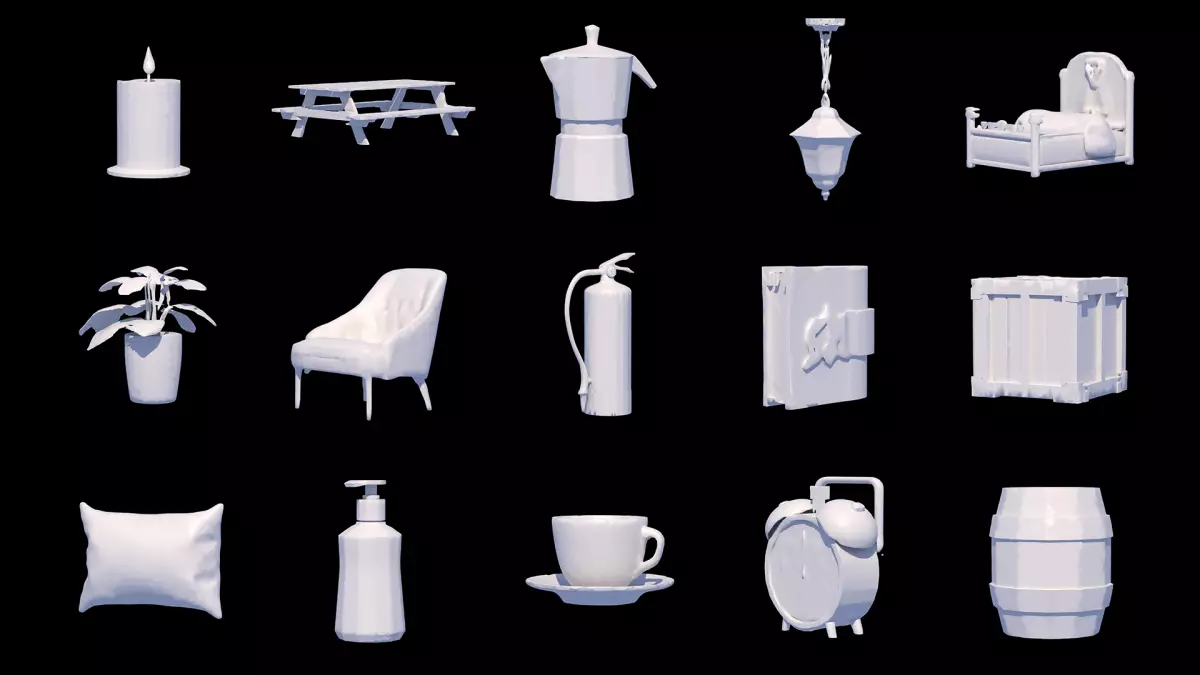On Monday, Roblox made a groundbreaking announcement that sent ripples across the gaming community—it unveiled the “Cube,” a new generative AI tool designed to empower creators in building 3D models. This innovation marks the beginning of a significant shift in how games can be developed on this platform, delivering capabilities previously deemed fantastical. What is ambitious about Cube is not just its initial rollout of a mesh generation tool, but its open-source nature, which democratizes access to this advanced technology, allowing creators from all backgrounds to utilize and build upon it.
While the Game Developers Conference (GDC) buzzes with excitement, showcasing cutting-edge technology, the focus on user-generated content remains paramount. Cube aims to streamline the 3D creation process within Roblox, enabling creators to conjure complex objects from simple prompts. By inputting a directive like, “generate an orange racing car with black stripes,” an entire model springs to life, ready for further refinement within Roblox Studio. This dramatic enhancement in ease of use could rewrite the rulebook for indie developers, granting them the ability to realize grander visions without the once-unattainable technical know-how.
Open-Source Flexibility: A Game Changer for Creators
Roblox’s decision to launch an open-source version of Cube is particularly noteworthy. It sends a clear message that the company values community input and collaboration. By allowing anyone to experiment, customize, and develop plugins, Roblox has positioned itself as a facilitator of creativity rather than just a platform for play. This level of flexibility encourages creators to innovate rapidly, harnessing Cube’s capabilities alongside their unique datasets and experiences.
As a testament to this robust ecosystem, creators could theoretically not only build upon the mesh generation tool but also integrate their designs into larger worlds or gameplay mechanics. This collaborative spirit enriches the entire Roblox community, emboldening both amateur creators and seasoned developers to push the boundaries of what’s possible.
Expanding Horizons: A Suite of AI Tools
Accompanying the introduction of Cube are three additional AI tools aimed at enhancing interactivity within games: text generation, text-to-speech, and speech-to-text. These features serve to elevate gameplay by making NPCs more engaging and games more narrative-driven. Imagine a player diving into an immersive world where they can have conversations with characters powered by intelligent dialogue systems. This type of interaction could redefine player engagement, making every session a unique experience.
On top of the conversational capabilities offered by text generation, the text-to-speech functionality further blends the divide between the player and the game world. Developers can introduce immersive narration or have NPCs engage players in real-time. Meanwhile, speech-to-text not only allows hands-free gameplay but also enables a more accessible experience for players who may have difficulty with traditional controls. The implications for inclusivity in gaming are profound, allowing a broader range of players to experience the joy of creation and interaction.
The Road Ahead: From 3D to 4D and Beyond
As expressed by Nick Tornow, Roblox’s vice president of engineering, the ultimate ambition is to realize what they call “4D creation.” This concept transcends traditional 3D modeling by incorporating interactive elements across multiple dimensions—offering a more dynamic experience that incorporates the interplay of objects, environments, and players themselves. Imagine prompting the AI to generate an entire forest scene that evolves with the seasons, where the hues of leaves shift from lush green to vibrant autumn tones. Such capabilities promise not only aesthetic diversity but also deepen the narrative experience within games.
However, this rapid advancement in generative AI also raises valid concerns. The integration of AI in gaming could disrupt job security within this professional landscape, as evidenced by CVL Economics’ projection regarding potential job impacts. The fear of displacement looms large as companies, including Tencent, enter this space with their own AI-driven innovations. The challenge for the gaming industry is to balance these technological advancements while safeguarding the livelihoods of those it employs.
With Cube, Roblox is diving headfirst into the future of game development, offering tools that bring creativity into the hands of many, while concurrently grappling with the implications of such progress. The excitement is palpable, as creators await a platform that promises to transform the way they engage with the digital world. Roblox is not just shaping games; it is shaping the future of gaming itself.

